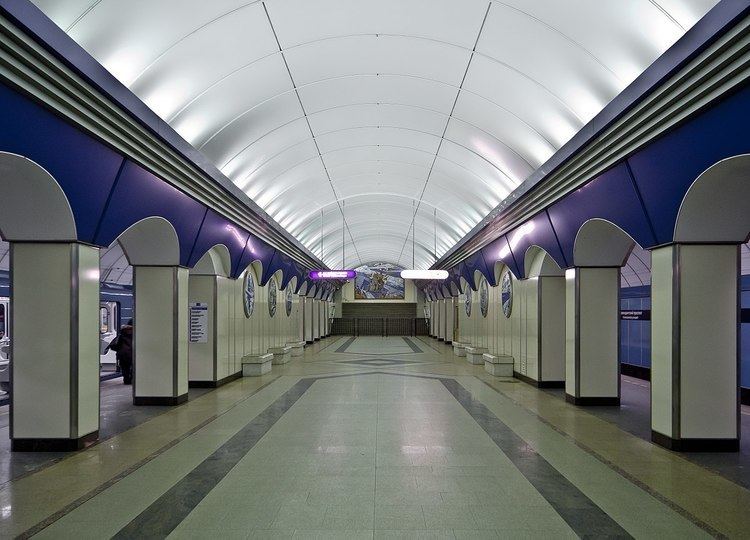 | ||
The deep column station is a type of subway station, consisting of a central hall with two side halls, connected by ring-like passages between a row of columns. Depending on the type of station, the rings transmit load to the columns either by "wedged arches" or through purlins, forming a "column-purlin complex".
The fundamental advantage of the column station is the significantly greater connection between the halls, compared with a pylon station.
The first deep column station in the world is Mayakovskaya, opened in 1938 in Moscow.
Column-wall station
One variety of column station is the "column-wall station". In such stations, some of the spaces between the columns are replaced with walls. In this way, the resistance to earth pressure is improved in difficult ground environments. Examples of such stations in Moscow are Krestyanskaya Zastava and Dubrovka. In Saint Petersburg, Komendantsky Prospekt is an example.
